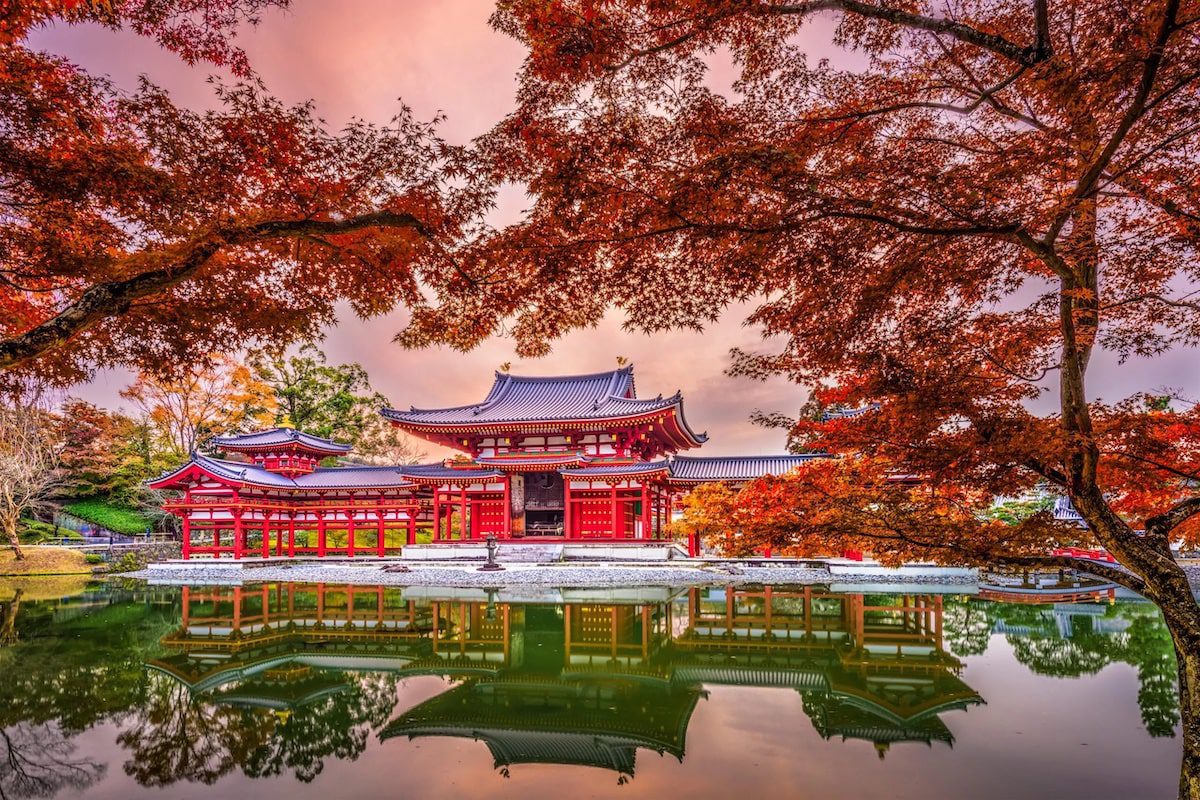Last updated on March 27th, 2024
Advice about Japanese culture from Rebecca Copeland, “The Kimono Tattoo”
by Carolyn Ray, Editor, JourneyWoman
Our May 2023 Book of the Month, “The Kimono Tattoo”, is set in Kyoto, Japan, and who better to ask about tips for your first trip to Kyoto, including etiquette and safety, than its author, Dr. Rebecca Copeland. Copeland is a professor of Japanese language and literature at Washington University in St. Louis. Her research specialties include modern and contemporary women’s writing in Japan, modern literature, and translation studies.
Her debut novel, The Kimono Tattoo, takes readers on a journey into Kyoto’s intricate world of kimono design, with detailed descriptions of many areas in Kyoto. According to Dr. Copeland, one of her goals in writing the novel was to inspire women to travel to Japan, and to make it accessible for everyone to embrace Japanese culture.
“I want readers to feel like they have been to Kyoto through the novel,” she says. “I want them to want to go to Kyoto. I want readers to see that Japan is not such a mysterious place. It’s okay to make mistakes. It’s okay to be an outsider. What’s important is to try to learn, to try to read the signs.”
A Q&A With Rebecca Copeland about Kyoto and Japan
To help women prepare for their first trip to Kyoto, Dr. Copeland generously provided her advice on several areas from etiquette to safety and off-the-beaten path places to visit.
Q. What do women need to know about Japanese etiquette?
Copeland: I think each culture has etiquette rules, we’re just not as aware of them when we grow up around them. The first time I went to a synagogue or a Catholic church, I was hyper conscious of not doing anything “wrong.” I still feel this way when I eat at a fancy restaurant and am confronted by all that silverware!
But Japan seems to especially have etiquette expectations! At the same time, there’s a tolerance for visitors to make mistakes. Here are some lines, though, that shouldn’t be crossed if possible:
A new visitor to Japan should be aware of the following:
1. Always remove shoes before entering a house, temple, traditional inn, dressing room, etc. Once you reach a threshold, look to see if there’s a demarked space for removing shoes. If in doubt, ask. Shoe etiquette took me a long time to learn (how to remove shoes, when to remove slippers, etc. For example, you change out slippers when you enter a toilet! At first it seems so annoying, but after a while it makes sense.)
2. When on a public transit (train, bus, etc.) do not talk to others in a loud voice. (Or on the phone.) And do not eat or drink. (In long distance trains, it’s perfectly okay to eat and drink. It’s encouraged. But talking loud is frowned on.)
3. Do not eat while walking on the street. Americans like to walk around eating hotdogs and ice creams, etc. But the Japanese find this distasteful. If you buy an ice cream at a booth, eat it there.
4. Be mindful of trash and recycling practices. There are not a lot of trashcans in public. (These were removed decades ago when there were scares of terrorists leaving bombs on trains and in trashcans!) Most Japanese don’t eat on the street so they don’t need a lot of public trash bins. If you find yourself with trash, put it in a plastic bag and carry it back to your room. Note that Japan separates out garbage from what is “burnable” and “non-burnable.” And in the latter category there’s a dizzying array of other smaller categories of separations like plastic bottles, cans, etc.—all in separate bins. Usually, tourists don’t have to worry about the separation of garbage, though.
5. It is changing, but most Japanese women do not go out in public with tank tops during the summer or short shorts. Younger Japanese women may, but older women tend to be more modest. Many find sleeveless tops even a bit too revealing.
6. A tourist should try not to bring a lot of luggage. Often the only way to get from the airport to the hotel is over mass transit. It’s difficult to get big suitcases on and off trains and buses and in the stations, you’ll find elevators are scarce. You’ll carry your things up and down stairs.
7. Furthermore, hotel rooms are small and there’s not a lot of closet space. So bringing as little as possible is the most comfortable way to go. But it’s hard! There are delivery services that will carry your bags from one location to another. It’s not that expensive and it’s pretty quick! But many of these do not correspond in English.

JourneyWoman readers said Japan was on their list of places to visit in 2023 / Photo of Daigoji Temple in Kyoto, Japan By lkunl
Q. Is Kyoto safe for solo women?
Copeland: I think Kyoto is very safe. Of course, women should always use caution when walking alone late at night. And women should always trust their instinct. During the day, I have never felt any threat—and I have climbed all over those hillsides I just described by myself. I’ve even hiked in the mountains by myself (where I was more afraid of encountering a wild boar or a monkey than a person.)
One other concern for women tourists is the incidents of groping on crowded trains and buses. Creepy men take advantage of the crowdedness to rub up against women and touch them inappropriately. It’s often difficult to recognize what is happening at first, since you’re pressed against so many people. Once you recognize that something awful is happening, you’re often powerless to move. You’re trapped. In that case, women try to elbow the culprit or step on his feet, but it’s hard to know you’ve got the right foot!
I guess the best advice is to avoid rush hour trains/buses at all costs. Sometimes, though, it’s difficult to avoid crowded transportation. Men who assault women on trains and buses or flash them in parks are known as “chikan.” Here’s more about chikan: https://guidable.co/living/be-aware-of-chikan-in-japan/
Q. What advice would you offer about where to stay?
Copeland: When I travel in Japan, I like to use Airbnb. I think they are pretty safe. I’ve never had a problem. Many are more affordable than hotels and you’re able to use the modest cooking facilities that they provide. (Japanese kitchens are mostly a hotplate, coffee maker, and microwave.) This allows you to save money on always eating at restaurants.
They also usually have a washing machine (but rarely dryer, so you need to bring clothes that dry quickly! (Not always easy in the humidity.)
Q. What transportation would you recommend for solo women on their first trip to Kyoto?
Copeland: In Kyoto and most of Japan you can buy a prepaid card (that you can re-charge) to use on trains and buses. It’s not really cheaper, but it is easier to use than digging for the change every time you need to get off buses or buy train tickets. More here.
Here’s an even more detailed site.
Alternatively, Kyoto city buses have day passes that are very reasonable if you plan to take more than two buses during the day.
Read More: Best Safety Products for Solo Women.
Q. Any thoughts on getting off the beaten track?
Copeland: Of course everyone wants to go to the temples and shrines that are ON the beaten path. There’s a good reason for that. Those are beautiful sites. They’ll also be very crowded.
When I’m in Kyoto, I just like to wander. I find Kyoto a very walkable place. My favorite part of Kyoto is called Higashiyama (on the east of the city) and I prefer the northern most parts of that area. I would recommend staying near the Shugakuin Imperial Villa. (In the novel, the Tani estate was nearby). There are three or four temples that are in this area that are just beautiful but are not regularly visited. One of these is Enkoji. It’s nestled back in a residential area along the hillside with a garden that climbs up the side of the hill. The temple has always been quiet when I visit.
Not far from Enkoji is Manshu-in. It is not as beautiful as Enkoji, but the walk there takes you to what feels very much like the countryside. The road is narrow and shaded and not many cars pass by.
Close to both of these temples is Tanuki-dani, one of my favorites! Almost NO ONE goes here. For one thing, it is quite a hike to get there up a very steep hillside. Once you get to the entrance of the temple, there is a very long flight of stairs—250 steps, to be precise.
Once you reach the top of the stairs, the temple looks like a small replica of the famous Kiyomizu-dera. The temple is named after the small figurines of tanuki (raccoon-dogs) that are everywhere on the temple grounds. To me, this is the most mysterious and wonderful temple I know. People do go there to pray for recovery from illness (particularly cancer). But whenever I’ve been it’s been almost deserted. Read more here:
I’m pretty sure my next novel will have a scene here. Above the temple is a path that goes to a trail that circles above Kyoto on the mountain ridges. I have walked the path here and there (never at Tanuki-dani and never very far.) A goal (unlikely to happen) is to walk all of it.
Finally, after you climb back down from Tanuki-dani (which means Tanuki Valley), I recommend you stop at the lovely Shisendo, a little villa (now a temple) dedicated to the Chinese saints of poetry. It tends to have more traffic than the other places I mentioned, but is worth a visit.
This route requires a lot of walking. And, because it’s off the beaten path, there are not a lot of restaurants along the way. Mostly it’s along residential streets. From Shisendo you can walk down to Shirakawa-dori and head west. Soon there will be more restaurants. From there you can return to the beaten path and tour Ginkakuji (Silver Pavilion) and walk the Philospher’s Path and you’re on course to follow Ruth.
I know this area very well and always feel so happy to be back on these familiar paths. But this summer, when I visit Kyoto, I will stay near the Kitano Tenmangu Shrine and I will begin exploring other temples and gardens off the beaten path. I really do not like crowds. So I enjoy exploring places that are tucked away.
Another fun thing to do in Kyoto is to go to the seasonal antique markets. There’s one every 21st of the month at Toji Temple, south of Kyoto station, and there’s another every 25th at the Kitano Tenmangu Shrine. Even if you don’t buy a thing, just looking at all the things for sale is fun. But if you DO buy, you can haggle!
There’s also a nice craft fair on the 15th of every month at Choin-ji Temple. And at the Kamigamo Shrine on the fourth Sunday of every month.
These are just a few. There are more. The above-mentioned newsletter will have announcements of different events happening each month (fairs but also musical performances and festivals.)
I think women who are planning their first trip to Kyoto readers might find this newsletter, Inside Kyoto, useful. It’s by a man named Chris Rowthorn. I don’t know him. (Wish there were a letter by a woman.) He seems very knowledgeable and the newsletter is chockful of good information about traveling as a tourist in the Kyoto area. He has advice for other “off-the-beaten-path” places.
Find endless things to do and local tours for your first trip to Kyoto here!
More Travel Tips to Stay Safe
More Travel Tips to Stay Safe
Where to Stay in Rome, Italy: Recommendations From Solo Women
Women share their top choices on where to stay in Rome, Italy, including hotels, hostels, and affordable options across the city.
Planning for a Northern Lights Expedition in Norway: Hotels, Apps and Packing
Travel tips for JourneyWoman’s Northern Lights trip with Hurtigruten to Norway, which may just become an annual adventure.
When Something Goes Wrong: What to Do if You’re Injured While Travelling
Anything can happen on a vacation. Here are some first-hand tips for women to plan for an unexpected injury.







Great article! I’ve always wanted to visit Kyoto, and this article provided helpful tips for first-time travelers like me. I appreciate the emphasis on respecting local customs and traditions. Being mindful and respectful when visiting a new place, especially one with such a rich cultural heritage, is important. I’ll keep these tips in mind when planning my trip!
I was in Kyoto in March 2023. I agree that some temples can be crowded but I loved them so much it was ok. Kyoto is a ‘must-see’ on any visit to Japan. I found the people of Japan to be so kind, generous, hard-working and proud.
This was a very useful article as I am a retired art teacher (79 years old) and contemplating a solo trip to Japan with a particular interest in textiles, pottery and gardens. Kyoto sounds like the perfect destination. For a 2 week visit, I would prefer to stay in one or 2 places and connect with local artists.
BTW, I always pack half a dozen or so battery powered tea lights for stays in unfamiliar lodgings. I leave them on during night to create a path from bed to bathroom. They help to avoid tripping over furnishings, scatter rugs, etc. that you can’t see in the dark.